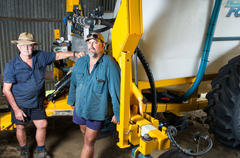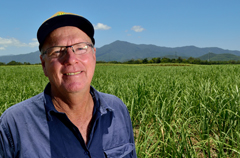Controlled traffic farming has the potential to deliver a wide range of benefits for farmers that will ultimately boost productivity and improve environmental outcomes.
The practice is designed to reduce soil compaction caused by mismatched farm machinery wheel spacings and maintain a healthier soil structure through minimal tillage. Less tillage also reduces the potential for erosion.
While the many benefits – such as fuel savings, less wheel damage to stools, reduced tillage and more accurate placement of planting material, fertiliser and herbicides – are clear, the move takes time and patience as many farmers have discovered.
 Steven Bonso, and his father Leo, reduced soil compaction levels by converting from 1.6m to wider 1.8m rows. With the help of an Australian Government Reef Trust III grant, through the Wet Tropics Sugar Industry Partnership (WTSIP), the Bonsos installed GPS guidance on their tractor, two-row planter and spray boom. Reaping the benefits with reduced harvesting costs, improved soil health and potential for higher yields. Read more.
Steven Bonso, and his father Leo, reduced soil compaction levels by converting from 1.6m to wider 1.8m rows. With the help of an Australian Government Reef Trust III grant, through the Wet Tropics Sugar Industry Partnership (WTSIP), the Bonsos installed GPS guidance on their tractor, two-row planter and spray boom. Reaping the benefits with reduced harvesting costs, improved soil health and potential for higher yields. Read more.


.jpg)